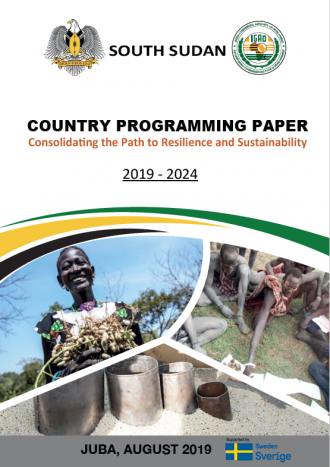South Sudan
Introduction
The South Sudan Country Programming Paper (CPP) for ending drought emergencies was finalized in 2014. The CPP is in line with the IGAD Drought Disaster Resilience and Sustainability Initiative (IDDRSI) 15-year regional strategy to end drought emergencies.
The South Sudan CPP identifies areas of intervention at national and regional level to sustainably build resilience to drought. The CPP serves as a planning, coordination and resource mobilization tool for projects and investments required to contribute to ending drought emergencies in the region. The strategic direction of the CPP is a two pronged integrated approach: first to break the cycles of emergency through instituting mechanisms for long-term resilience and secondly to realise the latent potential of the dry lands that are most affected. The CPP is therefore in alignment to the broader national thrust of moving the nation out of fragility through addressing both the emergency issues and the underlying causes that undergird vulnerability and perpetuate poverty.
Strategic interventions are outlined in the CPP under natural resource management, market access and trade, livelihood and basic service support, pastoral disaster risk management, research and knowledge management and peace building and conflict resolution.
The Republic of South Sudan is bordered by Sudan to the north, Ethiopia to the east, and Kenya and Uganda and Democratic Republic of the Congo to the south and west, respectively. It covers an approximate area of 658,000 sq. km (including Abyei).
South Sudan emanated from Africa’s most protracted war with the signing of the comprehensive peace agreement in 2005 and thereafter transitioning from the status of autonomy to full independence in July 2011 following a referendum on self-determination.
The population is projected at 12.2 million people (NBS Projection, 2018). South Sudan, unlike most other countries emerging from protracted conflict, is endowed with immense agricultural resources offering great potential for the country and for the region that is generally food deficit. The country boasts diverse agro-ecological zones of which 50% are prime land, but a full 80% is arable suitable for growing a wide range of food and cash crops.
Data from the National Household Baseline Survey 2009 (NHBS) show drought and floods are pervading shocks in South Sudan with over half (56%) of the population affected. Drought and floods are the most common natural hazards in all zones other than the Greenbelt, with some zones more drought prone than others (Muchomba and Sharp 2007).
South Sudan is highly shock-prone. The range of different shocks correlate with those of the wider region, yet indicate a country with unique sociocultural, political, economic and ecological character. Key shocks identified here include insecurity and violence including the December 2013 and July 2016 violent conflicts, economic crisis and high food prices, and natural shocks such as floods, drought, animal and crop diseases
The highest levels of poverty are found in the most drought prone areas of South Sudan. Poverty is concentrated along the northern Sudano-Sahelian dry, sub-humid and semi-arid belt that stretches across Northern Bahr el Ghazal, where 75.6% of the population lives below the poverty line, Unity (68.4%), and Warrap (64.2%). Other areas of significant concentration of poverty include Lakes State (48.3%) and Eastern Equatoria (49%) and Jonglei (48.3%), the latter two states being the most arid and most drought prone in the country. In terms of food insecurity, in 2011 the five states that were most severely affected were the drought prone states of Eastern Equatoria, Warrap, Northern Bahr el Ghazal, Lakes and Jonglei.
The Government of South Sudan Growth Strategy 2010-2012 and South Sudan Development Plan 2011-2013 recognized the need for concurrent and complementary political and economic reforms to stimulate and support broad based economic growth and democratic governance. The South Sudan Development Plan 2011-2013 was anchored in rapid rural transformation to improve livelihoods and expand employment opportunities.
Several policy documents have been developed to facilitate the implementation of the IDDRSI strategy. Some of these are the Comprehensive Agricultural Master Plan (CAMP), the Irrigation Development Master Plan (IDMP) and the South Sudan National Development Strategy (2018-2021). IDMP was tabled at the Cabinet and is awaiting approval and blessing by Cabinet and Parliament respectively as part of the adoption process. Absence of adoption of the CPP support documents can lead to limited translation of the strategy into well-defined strategic activities and programs. At the national level, the most significant adaptation goals are set out in the National Adaptation Plan of Action (NAPA) for South Sudan. Under the United Nations Framework Convention on Climate Change, NAPA provides “a process for Least Developed Countries to identify priority activities that respond to their urgent and immediate needs to adapt to climate change.
Platform Steering Committee Member:Mr. John O. Pangech – Director General of Planning and Agriculture Economics, Ministry of Agriculture and Food Security
IDDRSI Focal Point:Mr. Joseph Kulang Akech – Deputy Director for Environmental Impact Assessment, Ministry of Environment and Forestry
News from South Sudan
Events in South Sudan
Resources

The development and maintenance of this portal is co-funded by the European Union.

